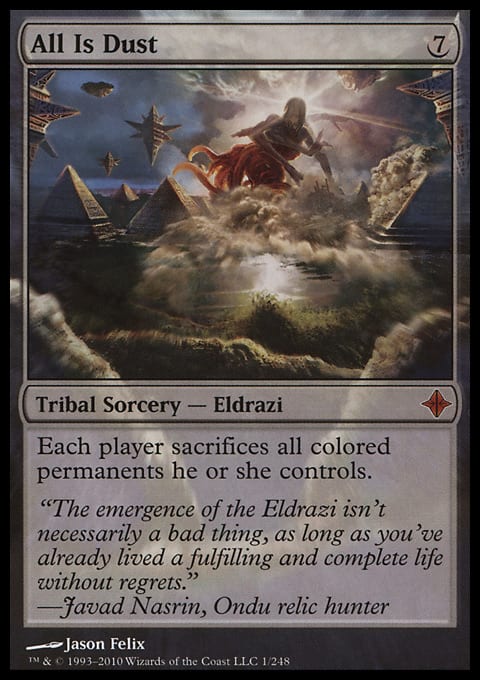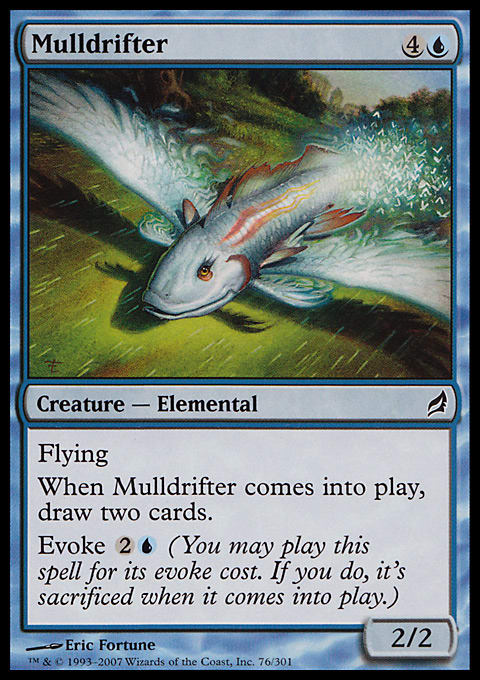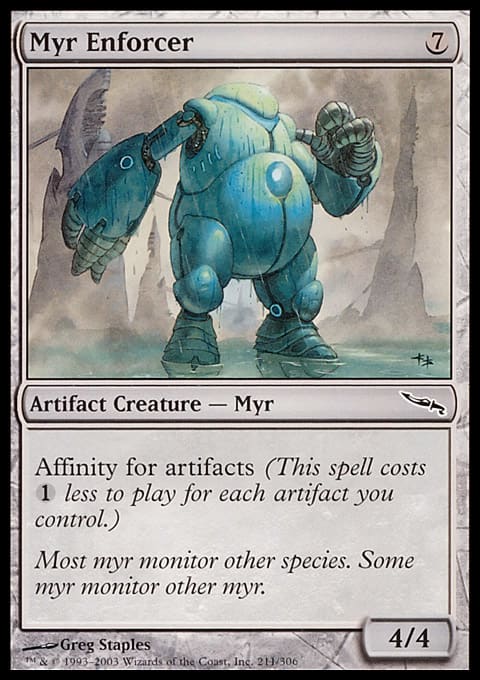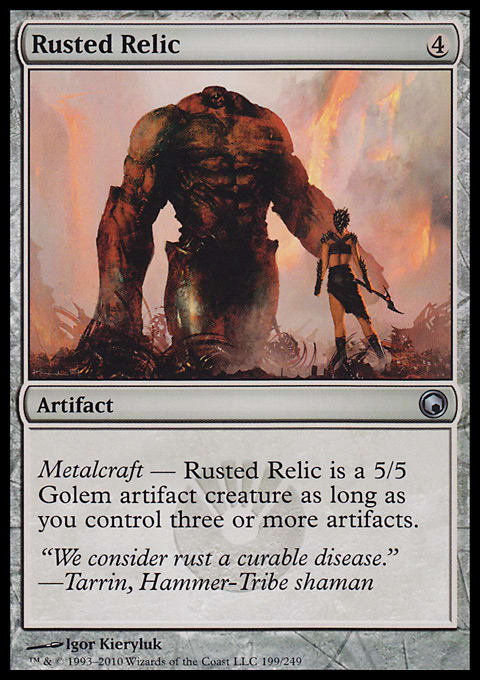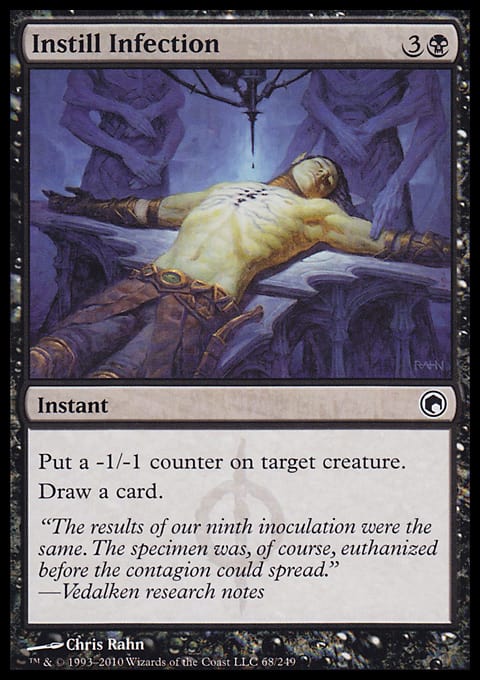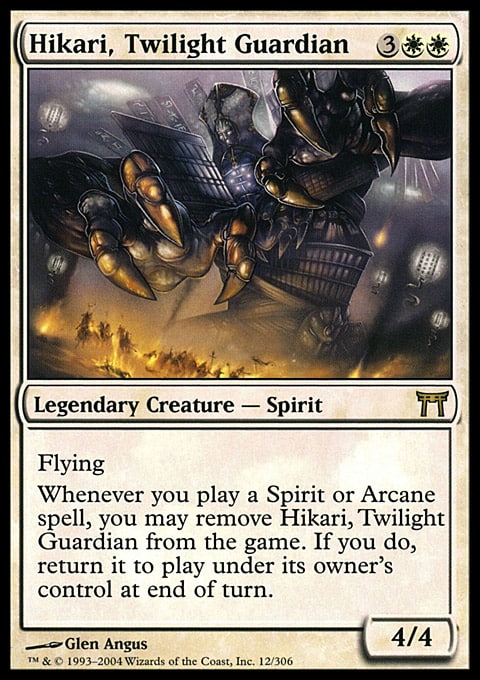With the new set coming out on May 22, it’s time to have a look at the recently released spoiler and pick out the goodies for the Casual Tribe. I’ll start with the best individual cards in each “color”—trying to avoid the highest-profile A-listers in favor of the budget-friendly studs—and then look at some of the mechanics that can contribute the most to casual decks.
The Cards
All Is Dust — This is the best sweeper ever (but worst acronym). Sure, it won’t kill the other Eldrazi, but it gets rid of so many threats that any color except white is going to benefit from it. Considering that the annihilate mechanic has more feel-bads than a sack of burning puppies, All Is Dust is the Eldrazi I want to find in my booster pack.
Leyline of Sanctity — This provides best-of-breed protection. It’s harder to remove than an artifact and potentially free, and it keeps those nasty burn, sacrifice, and discard effects at bay. It also makes it harder to clear your graveyard with effects like Bojuka Bog.
Mulldrifter — There’s nothing I’d rather see in my opening hand than Mulldrifter, but it has been pretty widely reprinted, so as a special bonus feature, I also give you . . .
Inexorable Tide — Next stop: Shenanigan Central. I run this in my Grixis Planeswalker deck where it is usually insane, but feel free to run it with mechanics like graft, evolve, wither/infect, or anything else that strikes your fancy. The ability to increase the counters on any permanent, regardless of targeting restrictions, makes proliferate surprisingly powerful in multiplayer, and Inexorable Tide gives you repeatable, 0-cost proliferation, potentially at instant speed.
Puppeteer Clique1 — This is not just a reanimation all-star, this is the Lebron James of reanimation! It takes the best guy in any opponent’s graveyard, swings with it, and then exiles it so that its owner can’t use it for him- or herself. Then, it holds opponents’ forces at bay with the threat of persisting back and doing it again. What a lot of people miss is that it doesn’t get exiled until the end of your next turn, so you pretty much always are able to swing with the creature you steal. Plus, unlike Whip of Erebos and similar effects, the creature only gets exiled if it sticks around until end of turn, so you could, for example, steal a Consuming Aberration or Molten Primordial, sac it yourself, and then steal it again. Finally, consider Puppeteer Clique as the solution to the swarm of Eldrazi you’re about to see. If you can flash in or sacrifice your Clique in response to Emrakul, the Aeons Torn hitting the graveyard, you can reanimate the big ugly bastard before he gets shuffled back into its owner’s library. You're welcome.
Comet Storm — There are so many strong red cards to choose from (speaking of infinite combos, Hellkite Charger has a lot of potential there), but Comet Storm is the best Fireball of all time—ever. Multikicker is the real deal, and every red deck needs at least one beefy, high-end X spell as a finisher. Put those two facts together, and Comet Storm is a card you need more of.
All Suns' Dawn — The worst part of playing Commander is that I can't maximize the potential of this awesome Regrowth variant. Outside of Commander, you can even play mono-green and still bring a full five cards back with these through the wonder of hybrid mana. Basically, it just takes a little effort to refill your hand with this single card, and it only costs 5 mana.
Vengeful Rebirth — Speaking of Regrowths, Vengeful Rebirth is another longtime favorite of mine, but I rarely see anyone else run it. Spot removal is underrated in multiplayer, and the kinds of spell you normally want to recur will be big enough to remove a major threat with Vengeful Rebirth. In fact, if the converted mana costof the card you bring back is high enough, you can build your whole deck around dumping expensive cards and vengefully rebirthing them. You might be inspired by this list.
Creakwood Liege — My buddy Chris would be pissed if I didn’t mention his favorite card from Modern Masters 2015 Edition. Creakwood Liege combines immediate impact (through pumping your team) and long-term value (through pumping out more dudes for it to pump up), which is exactly how Golgari decks win. Let me show you the kind of powerful, flexible deck that Creakwood Liege would slide right into: one of my longest-serving sixty-card decks:
Golgari Warmonger ? Casual | Daryl Bockett
- Creatures (25)
- 2 Hag Hedge-Mage
- 3 Indrik Stomphowler
- 3 Spiritmonger
- 4 Noxious Hatchling
- 4 Putrid Leech
- 4 Viridian Emissary
- 4 Woodlurker Mimic
- 1 Nath of the Gilt-Leaf
- Spells (13)
- 3 Crime // Punishment
- 3 Putrefy
- 1 Creeping Renaissance
- 1 Abundance
- 1 Recurring Nightmare
- 1 Tortured Existence
- 3 Sylvan Library
- Lands (22)
- 1 Plains
- 5 Swamp
- 6 Forest
- 2 Golgari Rot Farm
- 4 Overgrown Tomb
- 4 Woodland Cemetery
There’s early pressure, wide-spectrum removal, a ton of recursion in the late game . . . and people wonder why Golgari is my favorite guild!
Myr Enforcer — A vanilla 4/4 may not seem like much, but when you can drop it for less than 4 mana and play something else as well—or keep mana open to interact with your opponents on their turns—the value of this card will soon become obvious. There are splashier cards I could talk about (I'm very happy to have another shot at Spellskite, for example, and Sunforger is the awesomest Boros technology ever made), but it’s important not to lose sight of the value of commons and uncommons.
Ravnica bounce lands — For a super-fast format like Tiny Leaders, the tempo loss from playing Dimir Aqueduct and friends can be a big problem, but for most multiplayer games, you will be very happy to play these, and in fact I use the full complement of bounce lands in almost every one of my multicolored Commander decks. Sometimes a game might hinge on being able to bounce and replay a Bojuka Bog, but most of the time they prove their worth by fixing your mana and helping you drop a land every turn.
The Mechanics
So those are the cards I'm most excited to see in Modern Masters 2015 Edition, but a set is about more than just the cards. Sometimes, a set is about the cycles, although this set is the least cyclical set we’ve ever seen (two Planeswalkers, two Lieges, two Guildmages, two Commands, only one “god”). I think the legendary Eldrazi cycle is the only one they reprinted in its entirety, and it’s only three cards. What they did do is give new players a taste of some fun old mechanics. Presumably, Wizards of the Coast intended these to serve as draft archetypes, but I’m here to tell you that some of them can make great starting points for casual deck-building. Moreover, most of the mechanics they chose have great synergy with at least one other returning mechanic, which is a real boon to the casual deck-builder.
Let’s start with the obvious: Metalcraft and affinity for artifacts work perfectly together. These linear mechanics reward you for the number of artifacts you play, and they are incredibly open-ended. Add a little bit of proliferate and the amazing Everflowing Chalice, and you literally cannot go wrong.
Here’s a starting point for a super-fun artifact deck, which you should just about be able to assemble after your second MM15 Draft:
- 4 Everflowing Chalice
- 4 Steady Progress (or Tezzeret's Gambit)
- 4 Thoughtcast
- 24 Island
- 24 Any artifacts you can find
Incidentally, proliferate plus Everflowing Chalice is the answer to the question, “How can I generate the mana to cast Emrakul if I'm not playing green?”
Apparently, Abzan needed help because they added both graft and the aforementioned proliferate to bolster bolster. Graft lets you play meaningless weenies like Aquastrand Spider and then use them up putting counters on your more important cards later on, and it allows you to take more advantage of cards like Abzan Battle Priest and Abzan Falconer. Proliferate lets you go all Oprah on your dudes with counters. Cytoplast Root-Kin does a little bit of both.
Bloodthirst is another way to add +1/+1 counters, this time in black and red (although it was originally the Gruul mechanic from Guildpact. Am I the only one who had a card-crush on Skarrgan Pit-Skulk?). This mechanic really rewards you for pushing the tempo of the game with cards like a 3/3 for 2 mana (Stormblood Berserker) or a 4/4 lifelinker for 4 (Vampire Outcasts). It might be hard to play every one of these guys with the bloodthirst bonus, but they are also giving us Gut Shot, Burst Lightning (a.k.a. Super-Shock!) and Lightning Bolt—plus Vampire Lacerator and Goblin Fireslinger—so you have no excuse not to get your opponents all bloody. Plus, bloodthirst fits perfectly with the Mardu ethos, so you could put together a very nice B/R/x aggro deck without going any further back than Khans of Tarkir.
If +1/+1 counters aren't your style, how about -1/-1 counters? Force your opponents to do bookkeeping until they concede in frustration, with withering wonders like Sickle Ripper, Midnight Banshee, and the criminally underplayed Necroskitter. Note that Necroskitter doesn’t require your opponent’s creature to die because of the -1/-1 counters; a single counter on a massive creature will be enough to necro-recruit it to your side. That means that Instill Infection, also reprinted in MM15, can be a great response to a sweeper, giving you the biggest dude on the board while everybody else has to rebuild their forces from scratch.
Whether you’re playing bloodthirst or wither, Grim Affliction will be excellent spot removal, which brings us back to where we started with proliferate.
But before I go, let me just point out how awesome the much-maligned Kamigawa spiritcraft/Arcane mechanics can be. You only have a taste of it in MM15, but believe me: Nothing beats the potential card advantage you gain from a dedicated Spirit deck. Casting Death Denied is a great mid- to late-game play in any situation, but imagine splicing Through the Breach onto it to drop one of your newly revived creatures onto the battlefield—and maybe even splicing on Wear Away as well to Naturalize something—all without losing more than one card from your hand. Now imagine that you have a pair of Thief of Hope in play and you drain your opponent for 2 at the same time—and maybe ramp a little more because you have a Loam Dweller and an Elder Pine of Jukai on the battlefield. All of this happens every time you cast any spell in your deck. With that in mind, meet one of my favorite old-school multiplayer decks:
Champions of Spiritcraft ? Casual | Daryl Bockett
- Creatures (23)
- 1 Primordial Sage
- 2 Briarknit Kami
- 2 Seedborn Muse
- 3 Hana Kami
- 4 Elder Pine of Jukai
- 4 Haru-Onna
- 4 Loam Dweller
- 3 Kodama of the South Tree
- Spells (15)
- 2 Rend Flesh
- 2 Soulless Revival
- 2 Wear Away
- 3 Unchecked Growth
- 2 Joyous Respite
- 4 Kodama's Reach
The beauty of spiritcraft is that every piece of your deck interacts with every other piece. With a few creatures on the board, any spell you cast can give you the extra effects of a Rampant Growth, Travel Preparations, and a mini-Overrun (Overstroll?). If you have enough mana (and you will!), any instant or sorcery can also get you a Giant Growth, Naturalize, and Raise Dead with no card disadvantage. At some point, your opponents might wipe the board, but you will be so far ahead in cards that it won’t matter, and the combo of Hana Kami, Soulless Revival, and any other noncreature spells will let you rebuild faster than anyone else. Unfortunately, most of these spells were not reprinted in MM15, but I hope this deck shows you what you can achieve with spells like Hikari, Twilight Guardian, Moonlit Strider, or Long-Forgotten Gohei. The best part of all is that every color is equally endowed with Spirits and Arcane spells.
Modern Masters 2015 Edition provides a great chance for the Casual Tribe to get our hands on a bunch of high-powered tourney staples, but it also points you in a lot of interesting deck-building directions with cards that get you started but leave you with a lot of options for making your decks your way. I have no intention of ever playing Modern, but I sure am psyched for this set!
1 Infinite combos with Black Mike sold separately.













